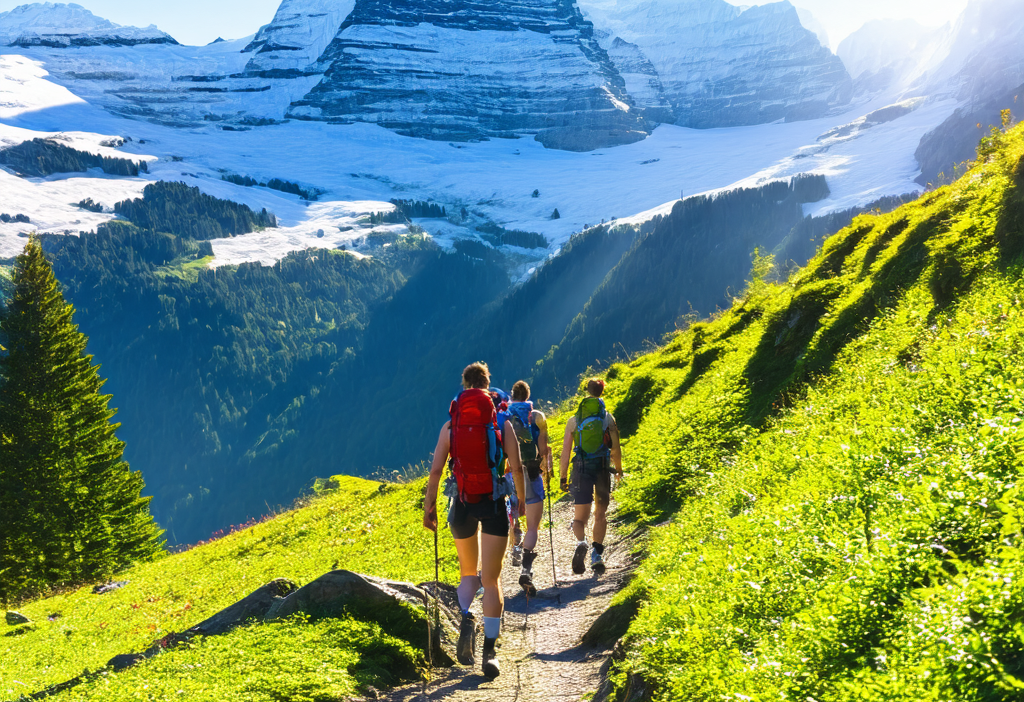Ultimate Guide to Hiking the Swiss Alps: Trails, Tips & Safety
Nestled in the heart of Europe, the Swiss Alps are a hiker’s paradise. With their dramatic landscapes, crystal-clear lakes, and charming mountain villages, these trails offer an unforgettable adventure for outdoor enthusiasts. Whether you’re a seasoned adventurer or a first-time hiker, this guide will help you navigate the best hiking trails in the Swiss Alps.
Popular Hiking Trails
The Swiss Alps are home to some of the most iconic hiking routes in the world. Here’s a list of must-try trails:
- Matterhorn Trail: A challenging route that offers stunning views of the Matterhorn, one of Switzerland’s most famous peaks.
- Eiger Trail: This trail takes you along the iconic Eiger mountain, known for its steep cliffs and breathtaking vistas.
- Haute Route: A long-distance trail that connects Chamonix in France to Zermatt in Switzerland, offering a mix of high-altitude hiking and stunning scenery.
Each of these trails offers something unique, from challenging terrain to peaceful alpine meadows. Researching the difficulty level and weather conditions is essential before setting out on your journey.
Essential Gear for Hiking in the Swiss Alps
Packing the right gear is crucial for a safe and enjoyable hiking experience. Here’s what you should bring:
- Hiking Boots: Choose waterproof boots with good ankle support to handle uneven terrain.
- Clothing Layers: The weather in the Alps can be unpredictable, so layering is key. Bring moisture-wicking base layers, insulated jackets, and a waterproof shell.
- Navigational Tools: A map, compass, or GPS device will help you stay on track, especially in remote areas.
- Hydration and Nutrition: Carry enough water and high-energy snacks to keep you fueled throughout the day.
Don’t forget to pack a first-aid kit, trekking poles for added stability, and a lightweight tent if you plan on camping overnight. Safety should always come first when exploring these majestic trails.
Safety Precautions Every Hiker Should Take
The Swiss Alps are beautiful but can be unforgiving if proper precautions aren’t taken. Here’s how to stay safe:
- Check Weather Conditions: The weather in the mountains can change rapidly. Always check forecasts before heading out and be prepared for sudden changes.
- Inform Someone of Your Plans: Let a friend or local authorities know your hiking route, expected start time, and estimated return time.
- Avoid Overexertion: Altitude sickness can occur at high elevations. Take it slow and allow your body to acclimate as needed.
- Stay on Marked Trails: Straying off designated paths can lead to dangerous situations, especially in rocky or avalanche-prone areas.
Respecting nature and adhering to these safety guidelines will ensure a memorable and secure hiking experience.
Best Times to Visit the Swiss Alps
The Swiss Alps are accessible year-round, but the best time to hike depends on your preferences:
- Summer (June to September): Ideal for hiking as trails are clear of snow and temperatures are mild. Expect lush greenery and vibrant wildflowers.
- Winter (December to March): For those seeking a different adventure, winter hiking offers the chance to explore snow-covered landscapes and enjoy cross-country skiing opportunities.
Regardless of when you visit, make sure to check trail conditions and adjust your gear accordingly. The Swiss Alps are always ready to welcome adventurous hikers with open arms—and breathtaking views!
So pack your bags, lace up your boots, and get ready to explore one of the world’s most stunning hiking destinations. Remember to respect nature, stay safe, and make unforgettable memories along the way.





